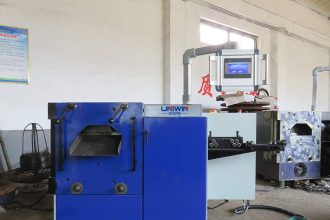Building an investment portfolio can be a complicated and confusing process as investors get confused between the myriad choices available to them. An ideal portfolio should hold various types of assets aligned with the investor’s goals. But what do you do when you are faced with two popular choices that offer guaranteed returns, namely fixed deposits (FDs) and Public Provident Fund (PPF)? How do you choose between these two investment vehicles and why? Here is all you need to know about PPF versus FD that will help you make a decision best suited to your circumstances.
What is an FD?
An FD is a low-risk saving and investment instrument offered by banks and non-banking financial companies (NBFCs). The rate of interest for FDs is set by the government of India ensuring that the returns on FDs are not affected by market volatility. This makes FDs very popular among investors who want safe and guaranteed returns. One of the easiest ways that investors can check the returns on an FD investment is by using an FD Calculator.
What is PPF?
PPF is also a low-risk saving and investment instrument. It is backed by the Indian government and was launched by the National Savings Institute in 1968. Similar to FDs, the returns on PPF schemes are guaranteed and safe as the interest rate is set by the government. One can start a PPF account through nationalised and private banks that are authorised to offer the scheme. Investors can use a PPF Calculator to check the returns that they receive through their PPF account.
What are the differences between FD and PPF?
Despite certain similarities, there are some major intrinsic differences between them, here is a look at their features and differences
| FD | PPF | |
|---|---|---|
| Interest rate | It is predetermined from the start and remains the same throughout the tenure. Interest is compounded on a monthly, quarterly, or half-yearly basis.Using an FD Calculator makes it easy to figure out final returns. | It is announced by every quarter. Interest payments are made every 31st March. |
| Tenure | Flexible terms ranging from as little as 7 days to 10 years. | Inflexible tenure with a lock-in of 15 years. Thereafter, it can be extended in blocks of 5 years. |
| Joint accounts | Allowed | Not allowed |
| Multiple accounts | Allowed. You can have multiple FDs running simultaneously. | Not allowed. You are allowed to have one only PPF account. |
| Eligibility | Resident Indians, Non-resident Indians, Hindu Undivided Families (HUFs), Trusts, and firms. | Resident Indians |
| Liquidity | Moderate liquidity. Premature withdrawal is allowed subject to a penalty charge. Penalty charge differs from bank to bank/NBFC to NBFC. | Low liquidity. Partial withdrawals are allowed from the 6th financial year of account opening. The amount that can be withdrawn is subject to certain conditions. |
| Maximum deposit | Variable, depending on the bank/NBFC. Generally, there is no upper limit. | Rs 1.5 lakh. You can use a PPF Calculator to figure out how much you should deposit to reach a certain goal figure at maturity. |
| Minimum deposit | Variable, depending on bank/NBFC. Generally, Rs 1000–5000 | Rs 100 at minimum, though many people prefer to deposit at least Rs 500 per year. |
| Loan facility | A Loan against FD can be availed at any time. | A loan against PPF is allowed from the third financial year. Loan amount and eligibility are subject to certain conditions. |
| Tax on interest earned | Taxable | Exempt from income tax. |
| Income | Some FDs can provide a regular source of income via payouts | The full maturity amount is available once the PPF account matures after 15 years. |
PPF vs FD—which one to choose?
Both PPF and FD are great saving and investment vehicles for risk-averse investors. Choosing between the two comes down to the individual’s financial goals and needs. If you are looking for a long-term saving and investment instrument, then a PPF may be the right choice. Just remember, there is a 15-year lock-in period and even partial withdrawal is allowed after an initial waiting period. PPF accounts are used by many to save for long-term goals such as retirement, children’s higher education, and so on.
FDs may be more suitable for short to medium-term goals. Some people park excess funds in a short-term FD instead of keeping it in a bank where it draws minimum interest. FDs with tenures of three to five years are very popular for saving for medium-term goals such as a holiday abroad or a car. Investors can choose tax-saving FDs to get the dual benefits of tax-saving and investment.
The bottom line
Investors should align their goals with their investments. This way, they can judge whether an FD or a PPF is more beneficial. They can also use an FD Calculator and a PPF Calculator to figure out their returns on maturity. Ultimately, shorter investment goals are probably more suited to FDs, while longer-term goals will be suited to PPFs.














